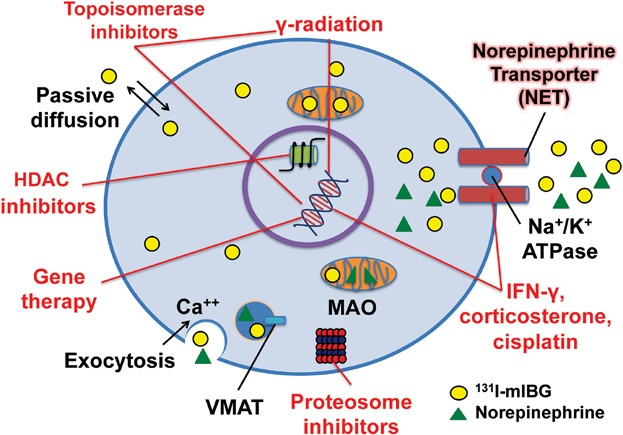Figure 1.

Representation of the mechanisms involved in 131I-mIBG uptake, retention, and efflux. Along with a passive diffusion phenomenon and exocytosis, 131I-mIBG may be released by the uptake carrier working in a reverse mode. The latter mechanism can be triggered either by the inversion of the sodium gradient across the cell membrane or by trans-stimulation by a ligand outside the cell membrane. Red text and lines represent the mechanisms being explored to enhance 131I-mIBG uptake, retention, and cytotoxicity. Some therapies radiosensitize neuroblastomas (HDAC inhibitors, gamma radiation, topoisomerase inhibitors, proteasome inhibitors) while others directly increase NET expression or enhance its function. Circle = 131I-mIBG, triangle = norepinephrine. HDAC = histone deacetylase; VMAT = vesicular monoamine transporter.
